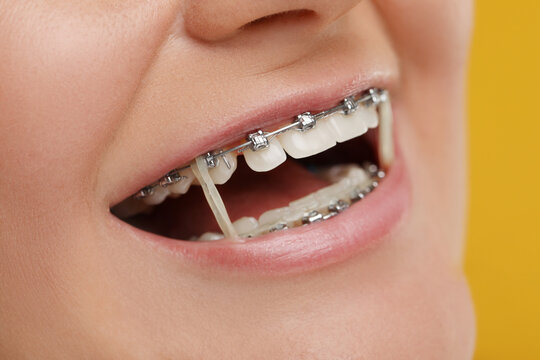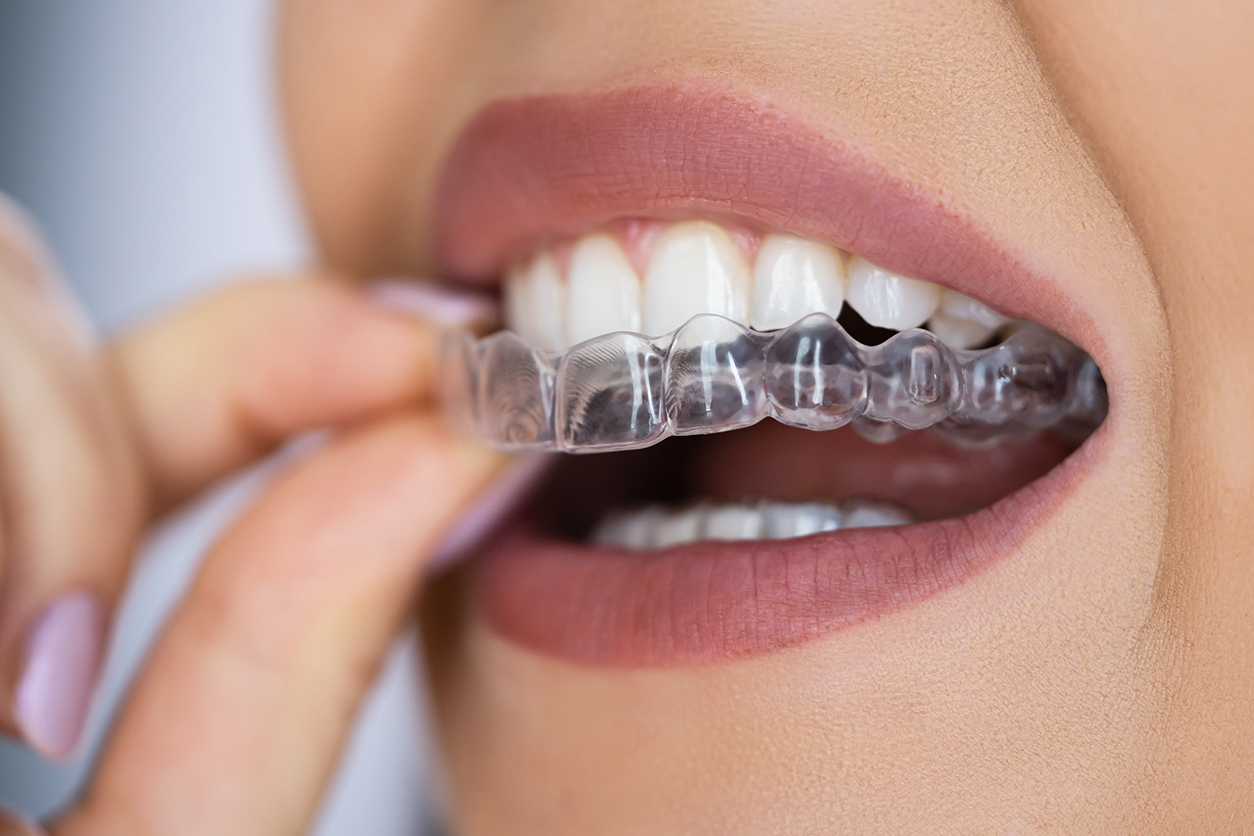
Orthodontic treatment is a structured process that addresses misaligned teeth and corrects bite issues to achieve a healthy, functional, and aesthetically pleasing smile. Each stage of the orthodontic process builds upon the previous one, ensuring gradual improvement while addressing specific dental concerns. By understanding these phases of getting traditional metal braces, patients can better appreciate the journey toward optimal dental harmony and oral health.
| Stage | Description | Duration |
|---|---|---|
| Consultation & Planning | Initial check-up, X-rays, treatment plan | 1 visit |
| Preparation | Tooth extractions, spacers, pre-braces treatment | 1–4 weeks |
| Braces Placement | Brackets, bands, wires attached | 1 visit |
| Alignment & Leveling | Teeth start shifting into position | 3–6 months |
| Bite Correction | Adjusting bite with elastics, expanders, or headgear | 6–12 months |
| Space Closure | Closing gaps between teeth | 3–6 months |
| Finishing & Detailing | Fine adjustments to refine the bite | 3–6 months |
| Debonding | Braces removal, cleaning, and final adjustments | 1 visit |
| Retention | Retainers to maintain alignment | Ongoing |
Stage 1 – Consultation & Planning

The treatment begins with a comprehensive evaluation and planning to tailor a treatment plan that meets the individual needs of each patient.
What Happens During the Initial Consultation?
During the initial consultation, an orthodontist conducts a thorough evaluation of the patient’s dental structure. This includes the use of X-rays, moulds, and digital scans to assess the state of the teeth and jaw.
Together with the orthodontist, patients discuss their desired outcomes, the expected duration of treatment, and the types of braces available. Common types include metal, ceramic, lingual, and aligners.
How Orthodontists Determine Your Treatment Plan
Orthodontists consider several factors to create a personalised treatment plan:
- Tooth Alignment and Jaw Positioning: The severity of malocclusion, tooth alignment, and jaw positioning are critical in determining the complexity and duration of treatment.
- Age and Growth Potential: Growing patients may require different approaches, as their growth can influence treatment outcomes and stability.
- Oral Hygiene and Compliance: Patients’ ability to maintain good oral hygiene and adhere to treatment requirements affects the choice of appliances and overall success.
- Aesthetic Preferences: Patients may have specific aesthetic goals, which can influence the choice of appliances, such as ceramic or lingual braces
Based on the specific dental issues, the detailed treatment plan may include:
- Mild Misalignment: Typically results in shorter treatment periods, often involving simple adjustments with braces or clear aligners.
- Severe Crowding: This may require extractions to remove teeth that are obstructing proper alignment or the use of expanders to widen the jaw and create more space.
- Bite Issues: Additional orthodontic appliances might be needed to correct these problems effectively. These can include devices that help adjust the jaw’s position or improve the bite alignment.
Stage 2 – Pre-Treatment Preparation
Before starting braces, some patients may need additional pre-treatment procedures to prepare their teeth and jaws for orthodontic correction. These steps address certain issues so that the braces can work effectively. Common pre-treatment measures include tooth extractions, spacers, and specialised appliances like expanders or anchorage devices.
Why Some Patients Need Tooth Extractions or Spacers
Orthodontists often recommend tooth extractions on overcrowded teeth to create space for better alignment and prevent complications during treatment.
On the other hand, spacers are small rubber bands placed between teeth before braces to create space for bands or other orthodontic devices.
| Option | Pros | Cons |
|---|---|---|
| Tooth Extractions | – Provides significant space for alignment – Reduces severe overcrowding – Simplifies complex cases |
– Irreversible procedure – May prolong treatment duration – Can cause temporary discomfort |
| Spacers | – Non-invasive and temporary – Quick preparation for braces – Ideal for minor adjustments |
– Limited space creation – Can cause mild discomfort – Not suitable for severe overcrowding |
Common Pre-Treatment Appliances
Certain appliances may be required to address specific structural issues before braces:
- Palatal Expanders: Used to widen a narrow upper jaw, creating space for proper alignment.
- Temporary Anchorage Devices (TADs): Small titanium screws placed in the jawbone to facilitate difficult tooth movements.
Stage 3 – Braces Placement

The placement of braces marks the beginning of the active phase of aligning teeth and correcting bite issues. This stage involves a precise process to ensure that the braces are securely and correctly installed.
How Braces Are Installed
The installation of braces is a meticulous process that involves several key steps:
- Teeth Cleaning: The teeth are cleaned thoroughly to prepare them for the bonding process.
- Brackets Bonded with Adhesive: Small brackets are attached to each tooth using a special adhesive.
- Archwire Inserted and Secured with Elastics: An archwire is inserted through the brackets, and elastics are used to secure it in place, providing the necessary force to move the teeth.
Adjusting to Life with Braces
After placement, patients must adjust to living with braces, which includes managing initial discomfort and adapting to new eating habits. During the first week, patients might experience mild to moderate soreness as teeth begin to move. In addition, some foods may be harder to chew or bite into initially.
Here are some tips to help relieve pain and discomfort:
- Using OTC pain relievers like ibuprofen can help manage soreness.
- Stick to soft foods for the first few days.
- Soothe the mouth with warm salt water to reduce discomfort.
- Apply orthodontic wax to any areas where the braces are causing irritation.
- Keep hydrated by drinking plenty of water.
Stage 4 – Alignment & Leveling (3-6 Months)
During the alignment and levelling stage, the focus shifts to regular adjustments to the braces, ensuring that the teeth move gradually into their desired positions.
How Teeth Start Moving
Teeth movement is facilitated by the archwires that run through the brackets attached to each tooth. They exert a controlled force that moves the teeth over time into alignment.
Regular visits to the orthodontist involve tightening or adjusting the archwire to maintain the necessary pressure for continuous movement.
How To Manage Pain & Discomfort
As the teeth begin to move, some discomfort is common.
- Tightening: The process of tightening the archwire can cause temporary soreness.
- Pressure on Teeth: The constant pressure applied by the braces can lead to mild discomfort.
To manage discomfort, here are some tips that can help:
- Apply orthodontic wax to areas where the braces cause irritation, which can help reduce discomfort.
- Consuming cold foods like ice cream or yoghurt can help numb the mouth and reduce pain.
- OTC medications like ibuprofen can help alleviate soreness and discomfort.
Stage 5 – Bite Correction (6-12 Months)

The bite correction phase focuses on resolving bite issues.
Fixing Overbites, Underbites & Crossbites
Bite issues, like overbites, underbites, and crossbites, typically involve the use of specialised appliances like elastics, headgear, or springs to ensure proper alignment of the upper and lower teeth.
- Elastics (Rubber Bands): These are attached to brackets to apply targeted pressure and guide for proper jaw alignment.
- Headgear: Often used for severe cases, headgear applies external force to correct jaw positioning and bite alignment.
- Springs: Coil or Forsus springs may be used to address specific bite problems by exerting continuous force on the teeth or jaw.
Common Challenges During Bite Correction
While bite correction is essential for achieving a functional and balanced bite, it can present unique challenges for patients. Bite correction can cause some soreness as the teeth and jaw adjust to new positions. Patients may also experience temporary difficulties in daily activities like eating or speaking.
However, it is essential to be compliant in wearing elastics:
- Use alarms or phone notifications to remember when to change elastics.
- Always keep spare elastics handy in case one breaks or is lost.
- Wear elastics exactly as prescribed by your orthodontist for optimal results.
- Remember that consistent use of elastics shortens treatment time and improves outcomes.
Stage 6 – Space Closure (3-6 Months)

Space closure is a critical part of orthodontic treatment, focusing on closing gaps between teeth to achieve a more uniform alignment.
How Gaps Between Teeth Are Closed
Orthodontists use various techniques to close gaps between teeth, ensuring that the teeth move into their correct positions:
- Power Chains: These are elastic chains that connect brackets, applying continuous force to pull teeth together.
- Elastics: Rubber bands or elastics can be used to apply additional force, helping to close spaces efficiently.
What to Expect During This Phase
During space closure, patients may experience some discomfort as the teeth adjust to new positions.
- Increased Pressure and Soreness: The continuous force applied during space closure can cause temporary soreness or discomfort.
- Retraction of Front Teeth: As gaps are closed, front teeth may be retracted to improve alignment and achieve a more balanced smile.
Stage 7 – Finishing & Detailing (3-6 Months)
The finishing and detailing stage is the final phase of active orthodontic treatment. During this phase, the focus is on making precise adjustments to refine the alignment and bite. This may involve:
- Minor Adjustments: Small changes to the archwire or brackets to fine-tune tooth positions.
- Bite Refinements: Ensuring that the upper and lower teeth fit together perfectly for optimal chewing and speaking functions.
Here is a checklist of final refinements before removal:
| Refinement | Description |
|---|---|
| Tooth Positioning | Ensuring each tooth is in its optimal position. |
| Bite Alignment | Confirming proper alignment of the upper and lower teeth. |
| Gum Line Alignment | Adjusting teeth to achieve a harmonious gum line. |
| Arch Form | Ensuring the arch shape supports a healthy, balanced bite. |
| Overbite/Underbite Correction | Final adjustments to correct any remaining bite issues. |
| Aesthetic Enhancements | Making any necessary adjustments for optimal aesthetics. |
Stage 8 – Debonding (Braces Removal)
The debonding stage is the removal of braces and the unveiling of your new smile. This process is straightforward and painless and typically takes 30 minutes to two hours.
How Braces Are Removed
The orthodontist uses a special tool to gently break the bond between the teeth and brackets. The brackets and wires are removed as a single unit or piece by piece. After removing the brackets, any remaining adhesive is polished off using a dental handpiece. This leaves the enamel smooth and clean.
Teeth may feel slightly “strange” or sensitive after braces are removed, as they are no longer under pressure.
Teeth Whitening & Polishing After Braces
Once braces are removed, some patients may notice slight discolouration or stains where brackets were attached. Whitening and polishing can help restore brightness and uniformity to your smile:
- Removing Stains: Professional cleaning can eliminate plaque buildup and minor stains caused by brackets.
- Whitening Options: Patients can opt for in-office whitening treatments or at-home whitening kits to enhance their smile further.
Stage 9 – Retention Phase (Wearing Retainers)

The retention phase is the final and lifelong step in orthodontic treatment, designed to maintain the corrected positions of teeth after braces removal.
Why Retainers Are Necessary
Retainers are indispensable for preventing teeth from shifting back after orthodontic treatment. Here’s why they are essential:
- Preventing Relapse: Teeth naturally tend to move back to their original positions due to forces from surrounding tissues and habits like tongue thrusting or grinding.
- Stabilising Soft Tissues: Retainers allow time for the periodontal ligament, gingival fibres, and jawbone to stabilise around the newly aligned teeth.
- Lifelong Maintenance: In many cases, orthodontists recommend wearing retainers part-time indefinitely to ensure lasting results
Retainer Maintenance & Cleaning
Proper care of retainers is crucial for their effectiveness and longevity. Follow these guidelines:
- Cleaning:
- For removable retainers: Brush gently with a soft toothbrush and mild soap or specialised retainer cleaner.
- Do not use hot water, as it can warp plastic retainers.
- For fixed retainers: Use floss threaders or water flossers to clean around the wire and bonded areas.
- Storage:
- Always store removable retainers in their protective case when not in use.
- Keep them away from heat sources or pets that might chew on them.
Visit your orthodontist periodically to ensure the retainer fits well and remains effective.
Conclusion
Orthodontic treatment is a transformative journey that progresses through nine distinct stages, from the initial consultation to the final retention phase. Each stage helps achieve straight teeth, correct bite issues, and achieve a healthy, confident smile.
To learn more about orthodontic treatment or to begin your smile transformation, visit Smile Team for expert care tailored to your needs.
